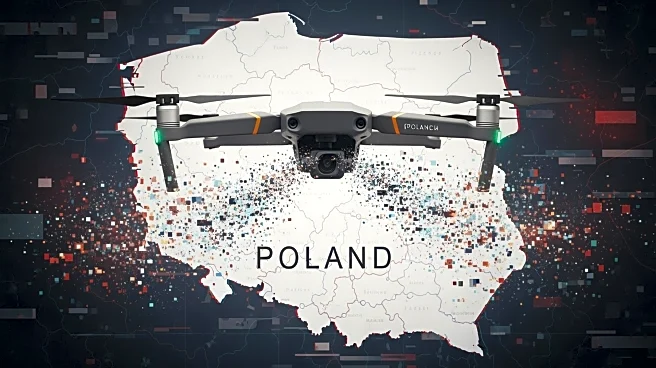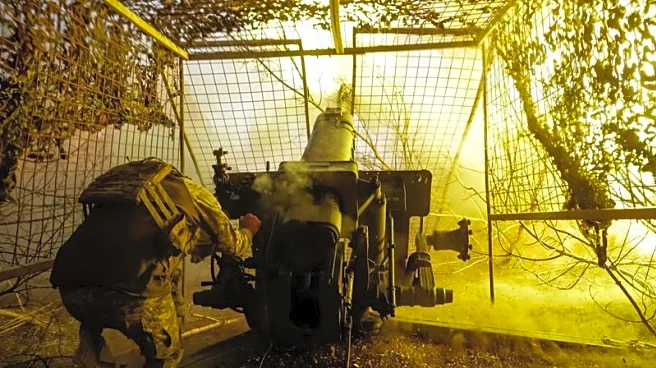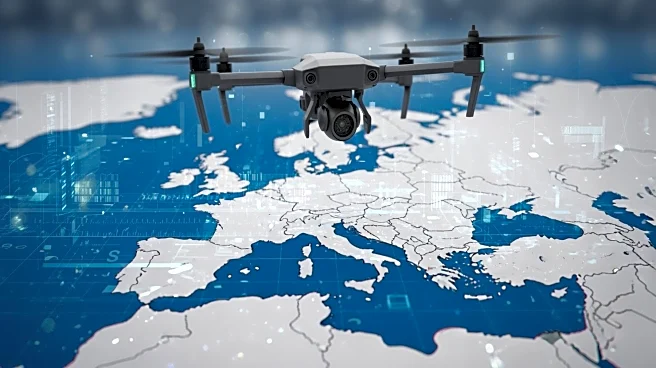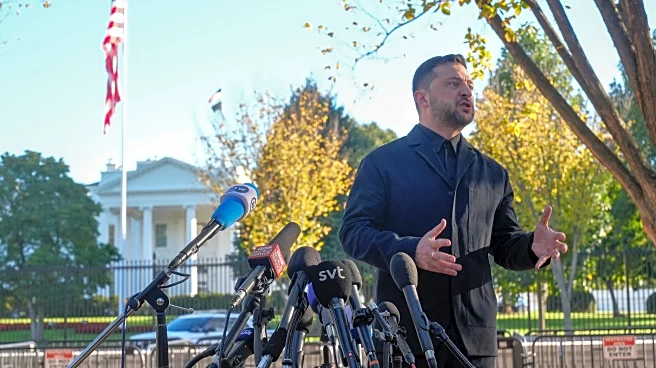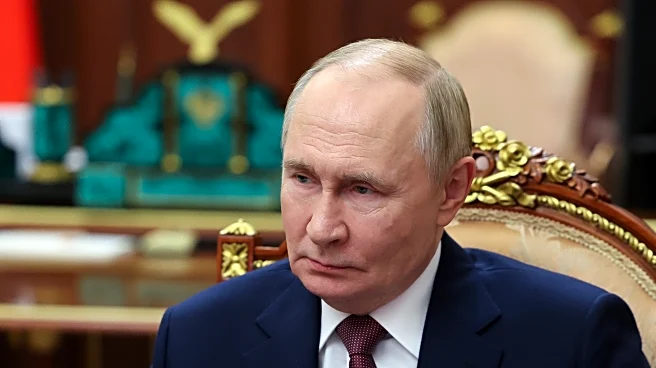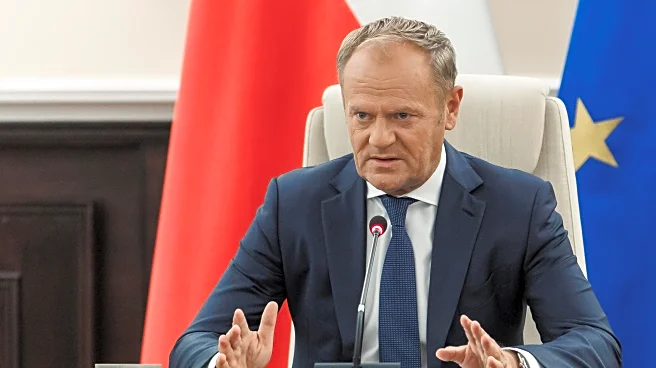What's Happening?
Russian drones recently entered Polish airspace, prompting Poland to investigate what it termed a 'serious violation' of NATO territory. This incident triggered a significant disinformation campaign, with social media flooded by posts claiming the drones were
Ukrainian, suggesting a 'false flag' operation to draw NATO further into the conflict with Russia. The event is seen as a test of NATO's readiness and has been accompanied by a coordinated effort to spread misinformation, with over 170,000 posts on Polish social media discussing the drones. Many of these posts falsely attributed the drones to Ukraine, feeding into conspiracy theories. The Polish government and digital monitoring groups have identified this as part of a broader Russian and Belarusian disinformation strategy aimed at sowing division within Poland and NATO.
Why It's Important?
The drone incursions and subsequent disinformation campaign highlight the evolving nature of hybrid warfare, where physical provocations are paired with digital misinformation to destabilize and divide. This strategy poses a significant challenge to NATO and European security, as it complicates the ability to respond effectively to threats. The misinformation campaign aims to undermine trust in government and military responses, potentially weakening public support for NATO's actions. The incident underscores the need for enhanced counter-disinformation measures and improved public communication strategies to combat false narratives. It also raises concerns about the vulnerability of social media platforms to manipulation, which can have far-reaching implications for national security and public perception.
What's Next?
European governments are likely to increase their focus on countering both drone threats and disinformation. The European Commission is considering the implementation of a 'drone wall' along the EU's eastern border to detect and counter such incursions. Additionally, there is a push to view disinformation as a national security threat, necessitating coordinated efforts to monitor and debunk false narratives. NATO and its member states may also enhance their electronic warfare capabilities and public communication strategies to better address these hybrid threats. The ongoing situation will require vigilance and cooperation among European nations to safeguard against both physical and digital provocations.
Beyond the Headlines
The incident reflects broader geopolitical tensions and the strategic use of disinformation as a tool of influence. It highlights the challenges faced by democratic societies in maintaining information integrity and public trust in the digital age. The reliance on social media for news and information makes societies particularly susceptible to manipulation, emphasizing the need for media literacy and critical thinking skills among the public. The situation also illustrates the complexities of attributing responsibility in hybrid warfare, where plausible deniability and misinformation can obscure the truth and hinder effective responses.
